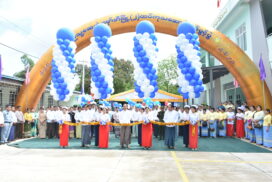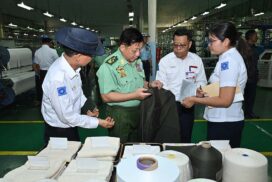By Dr Than Lwin Tun
Health is defined as “a state of complete physical, mental, and social well-being and not merely the absence of disease or infirmity” (World Health Organization-WHO, 1948). The Global Health for Peace Initiative (GHPI) aims to position health as an influencer of peace and WHO as a sustaining peace actor through conflict-sensitive health interventions, deliver peace outcomes in conflict-affected areas, and contribute to WHO’s Triple Billion goals. The GHPI considers different levels or components of peace; “Peace” as political peace, peace processes and agreements at high levels and “Peace” as social cohesion, resilience and trust at the community level.
Why the GHPI: Because 80 per cent of WHO’s humanitarian caseload, as well as 70 per cent of disease outbreaks that WHO responds to take place in Fragile, Conflict-affected and Vulnerable (FCV) settings – because using a conflict-sensitivity approach avoids “doing harm”, increases project acceptance, and helps mitigating risks, because health interventions can make a real difference: health being often viewed as a “common good” by all sides of a conflict, it allows health initiatives to serve as a starting point for bringing people together, because the Health for Peace approach strengthens the sustainability of our interventions and results through dialogue, participation, inclusiveness, and trust building and because changes are happening at the global policy level, such as with the promotion of the UN Sustaining Peace agenda and the Humanitarian-Development-Peace Nexus (HDPN).
How to implement the Health for Peace approach: The GHPI promotes and supports the development of health programmes and we need to consider step by step the following analyze conflict and peace factors, actors and dynamics, analyze how they interact with our interventions, “Do no harm” – Design interventions that are sensitive to conflict dynamics, drivers, and actors, and seek ways to contribute to peace outcomes while pursuing health objectives (peace-responsiveness).
We would like to mention examples of peace-responsive programming like the improvement of social cohesion and resilience at the local level, improvement of citizen-state cohesion and reducing exclusion, increased trust between conflicting parties and facilitation of inter-state collaboration (health diplomacy on health governance and cooperation).
Health and peace are interrelated. In the words of the WHO Director-General, Dr Tedros, “there cannot be health without peace, and there cannot be peace without health”.
Innovative Approach: what is new and innovative about the Health for Peace approach is that health programmes can be used not only to work in conflict (achieving health benefits in conflict situations) but also to work on conflict. In this way, the GHPI builds on past WHO health programmes which looked at delivering health interventions with direct health benefits in conflict settings, such as the WHO – Health as a Bridge for Peace projects in the 1980s and 1990s.
Peace-relevant health interventions can help improve the prospects for local peace in at least four ways: the first as a minimum, by mainstreaming conflict-sensitivity into humanitarian analyses and assessments, recruitment, programming and monitoring and evaluation, the second by working to improve trust and communication between citizens and the state by making health care more accessible and equitable, the third by building collaboration between different sides in a conflict on common topics like health governance and the delivery of care, and finally by improving social cohesion at the local level through community healing or inclusive, health promotion initiatives.
The GHPI is the WHO’s contribution to the growing architecture linking humanitarian assistance, long-term sustainable development (through the Sustainable Development Goals) and peacebuilding.
The COVID-19 outbreak has demonstrated that health emergencies, or the responses to them, can be a trigger or an aggravating factor for conflict. However, it has also demonstrated that health programmes can be powerful enablers in the peace-building process and carefully chosen health activities can deliver peace dividends in addition to health benefits. The GHPI brings this into focus and emphasizes that the connection between health and peace is real, powerful and essential to ensuring the effectiveness and sustainability of health programmes.
Health interventions are particularly well-suited for peacebuilding because caring for the sick and injured is considered both a neutral activity and a universal good. The Health for Peace approach strengthens the sustainability of our interventions and results through dialogue, participation, inclusiveness, and trust building.
In addition, if we work collectively with team spirit and a health-for-peace approach, we will never ever fail in our endeavour and we will be successful in effectively serving the population of our country.
Reference:
WHO; Global Health for Peace Initiative (GHPI)













